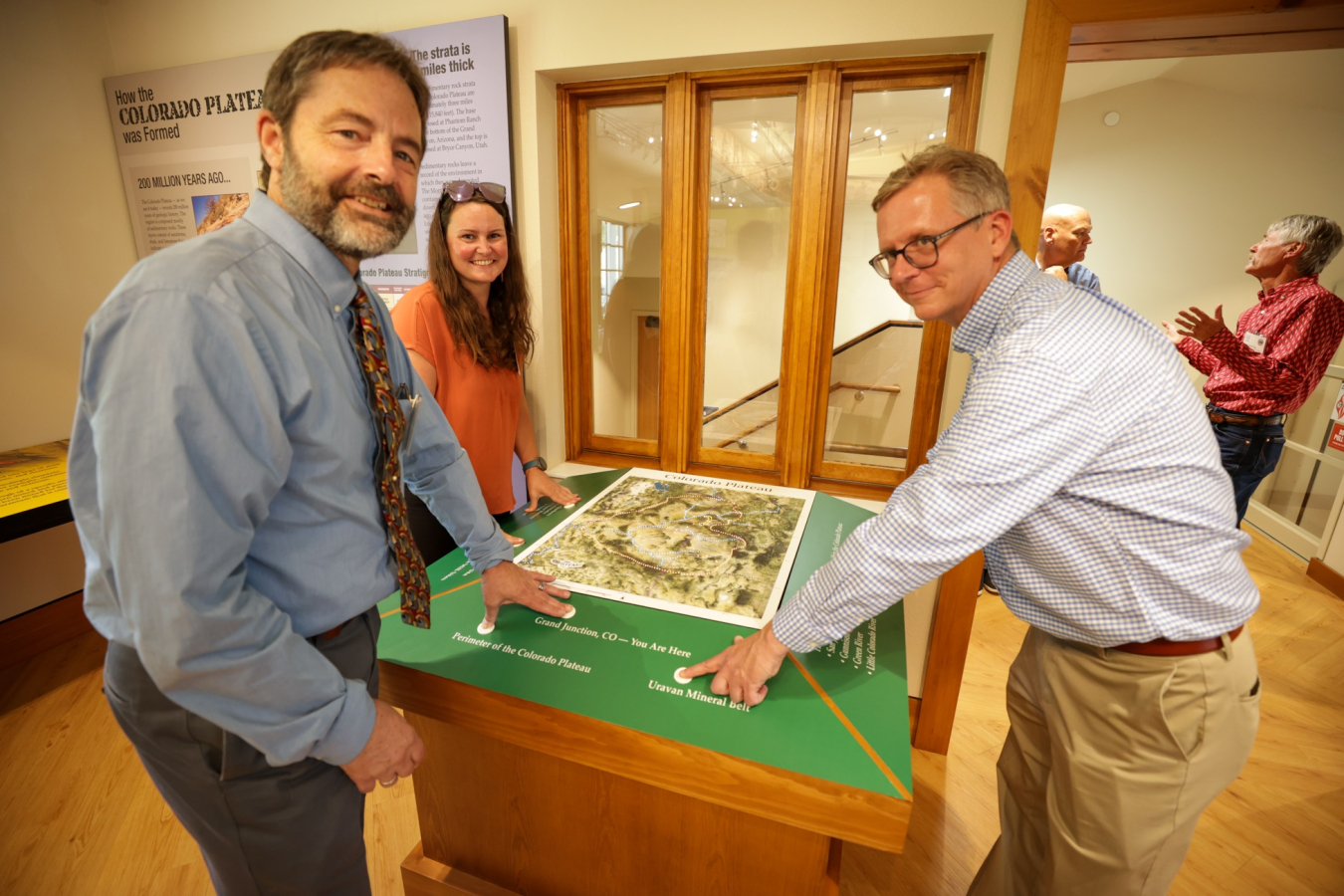During his career, he helped lay the groundwork for remediation strategies that are still in use today.
October 24, 2023
As part of LM’s oral history project in which we capture video of former employees as they share their perspectives of work across the nuclear weapons complex, U.S. Department of Energy Historian Eric Boyle interviewed Dr. David Shafer, former LM technical director, in 2022. Watch this excerpt of his interview here where he talks about how LM uses history and outreach to engage with stakeholders.
“History can be an avenue to educate people as well, in a less threatening way,” Shafer said.
As part of LM’s 20-year anniversary celebration, this is one in a series of profiles of current and former LM employees who address various aspects of the LM mission.
During his 12-year career at the U.S. Department of Energy Office of Legacy Management, former LM Technical Director for Long-Term Stewardship David Shafer helped chart a course the agency still follows today.
Before his time at LM, Shafer had already been part of the work to clean up the nation’s Cold War environmental legacy resulting from decades of nuclear weapons production and government-sponsored nuclear energy research.
In fact, it was his work with DOE’s Office of Environmental Management in the late 1980s where he witnessed firsthand some of the world’s most dangerous nuclear sites that had large amounts of radioactive wastes and groundwater contamination.
What Shafer saw and learned at those sites contributed to a groundbreaking report for Congress about the legacy of the U.S. Atomic Energy Commission’s work. The report was the first of its kind — mapping uranium mines and mine conditions — which was a key step in establishing future remediation strategies.
“Sometimes you feel like you produced a report and it just goes onto a shelf, but this one was a huge success,” Shafer said of the report that unlocked dollars and doors to help propel cleanup efforts. “It was well received and we got funding from Congress to start a program addressing hazards at these mines.”
In 1998, Shafer left DOE to work in the private sector. When he returned to take a position with LM, he realized he was on familiar terrain.
“Some of the sites I had worked on in the environmental management program had since moved into long-term stewardship with LM. It was neat to see them come full circle, to know what they had looked like at one time and to now be managing them in a different capacity was so exciting and satisfying,” he said.
Shafer dove in headfirst, spearheading work to identify key sites with endangered species habitats and unique plant communities to integrate the latest science and technology into LM's long-term site maintenance. Throughout it all, Shafer said he was keenly aware this was uncharted territory.
“I felt as though we were almost inventing a discipline,” he said, referring to blind spots in environmental remediation programs at the time, such as finding solutions for groundwater contamination. “There was a growing recognition that there were just technical limitations there.”
Shafer and his team resolved to overcome those obstacles by sharing their experiences and discoveries, which resulted in creating a consortium of national laboratories to independently review contaminated sites, especially groundwater contamination issues. These collaborations are instrumental in establishing an expanded network of experts nationwide, setting the stage for future partnerships.
Current LM Technical Director Tania Smith Taylor joined LM in 2016 and worked with Shafer from then until his retirement. She said Shafer provided a wealth of knowledge.
“David is super knowledgeable of groundwater and geology issues and maintains a natural curiosity and thirst for learning,” Taylor said.
Taylor credits Shafer with navigating safe operations when the COVID-19 pandemic called for a new approach.
“David did a phenomenal job leading the organization to assess, support, and prioritize field-essential operations that needed to occur during the COVID shutdown versus those that could be curtailed,” Taylor said.
Shafer retired last year but continues to pursue his passion for environmental cleanup. This time, however, he is sharing best practices with teams on the other side of the globe, in the former Soviet Union.
“I’m getting ready to do a training course in Kyrgyzstan,” said Shafer, who was instrumental in DOE’s international affairs initiatives. “The country wants to start up a surveillance and monitoring program. A lot of LM sites in the western United States are similar to some of their sites.”
The opportunity to share what he’s learned at home with former adversaries abroad shows David Shafer’s career has again come full circle.

